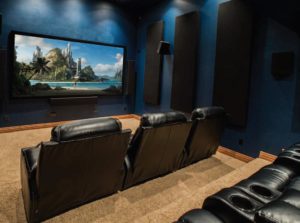Ultra HD, better known as “4K,” is everywhere these days. Previously restricted to only high-end models, 4K resolution has now become affordable.
The Basics of Everything You Need to Know About 4K TVs
To put it simply, Ultra HD is a resolution greater than HD. The starting point for everything you need to know about 4K TVs is that they have 3,840 pixels horizontal and 2,160 vertical. If you do the math, you end up with 8 million pixels. That’s about 4 times as many as standard HD. Will I see the difference? Yes. The resolution will be sharper and crisper and allow you to sit much closer without seeing visible pixels. Remember, the cheapest way to get a bigger TV is to move the couch closer. And a bigger screen makes the viewing experience more engaging which is what it is all about. But what is really exciting about 4K is HDR or high dynamic range. It means a better contrast ratio, blacker blacks, and richer colors for a more realistic image. Make sure the TV you’re looking at has it.

Will I Need New Equipment
If you are passing through a surround sound receiver, it will need to be HDMI 2.0a compliant to work. If you bought high speed cables in the past, they will probably be ok, but all equipment needs to be HDMI 2.0a compliant. You could also upgrade to a 4K Blu-ray player.
What About Content
As of now, there isn’t a lot, but it is coming fast. More and more movies are available every day, plus for streaming content, Netflix and Amazon are jumping on the band wagon. Keep in mind, all 4K TVs have video converters that take standard HD and upconvert it to 4K. But take note, however, that while most of the big-name manufacturers’ Ultra HD TVs do a solid job with upscaling, some budget brands do not.

OLED vs LED
Pretty much every set out here is LED these days. This is a back lit display that can pull off really great brightness but struggles a bit when it comes to displaying darker images. OLED, a new and more expensive option, can achieve perfect black levels. Unlike a backlit LED screen, OLED screens light up on a pixel by pixel basis. That means that in a dark scene, all those black pixels are just shut off for perfect black. This creates much more vivid contrast and a richer image but can suffer some in brightness. In the end, it becomes personal preference.
Curved vs Flat
Curved screens were designed for very large images to create a more immersive feeling. Living room TVs aren’t large enough to do that. They are pretty much a gimmick, and that is why most TV manufacturers are discontinuing them. I would skip the curve and spend the extra money on a bigger TV.
Testimonial
“Randy is the best in the business! Never met a business owner more dedicated to providing customers value without sacrificing quality. It speaks volumes that with his wealth of knowledge/skills, he maintains such honest business practices! Sound Investments is the right choice for any project big or small.”
– Calvin Webster
